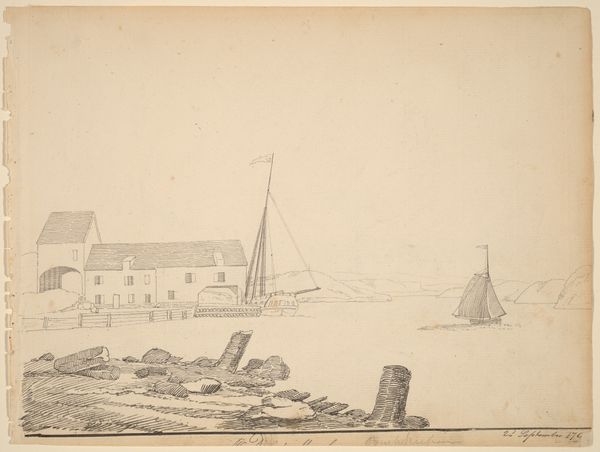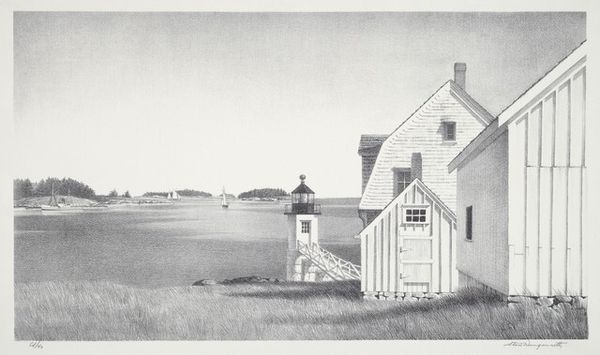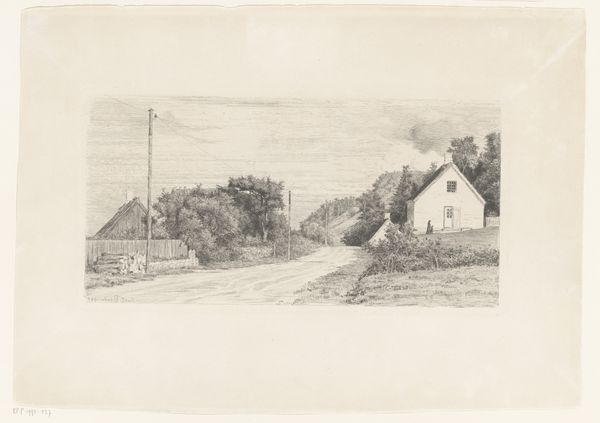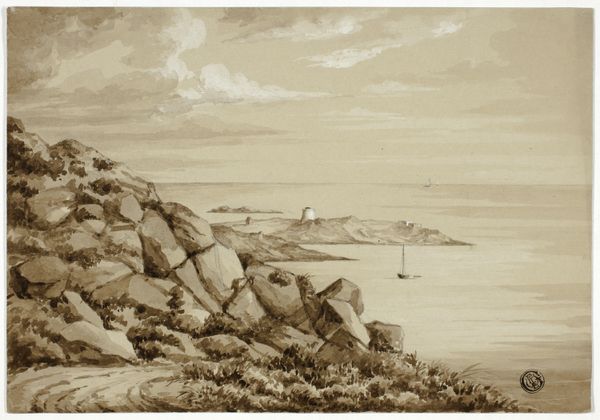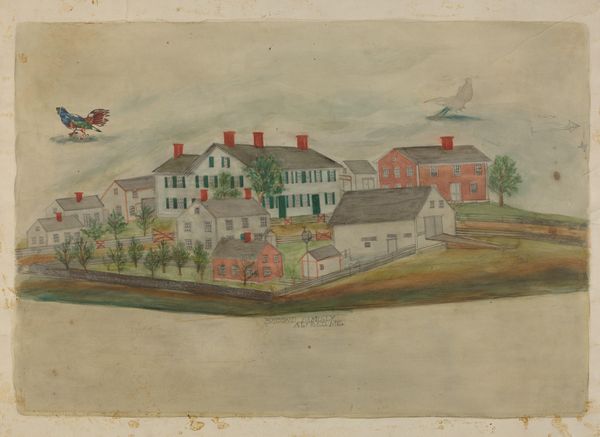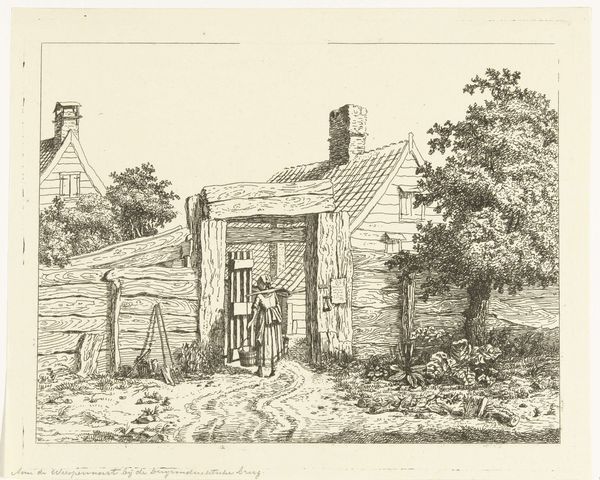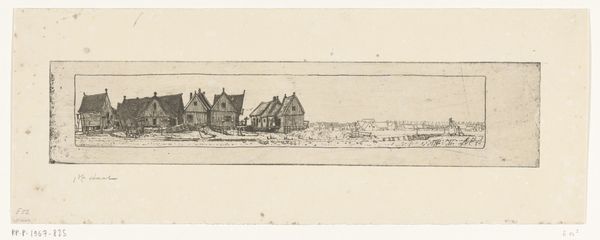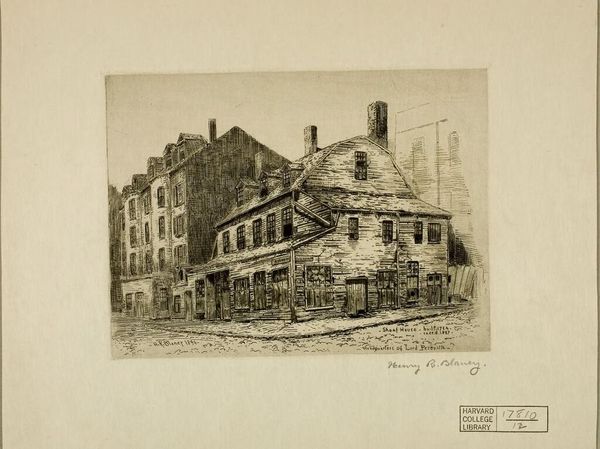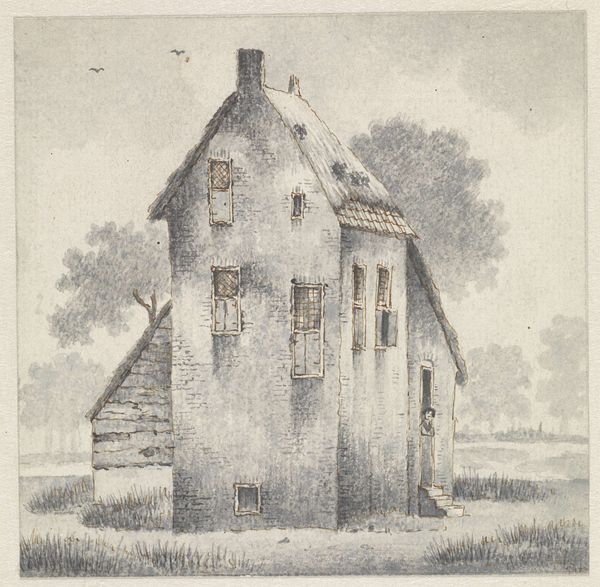
Execution Rocks, from the Lighthouses series (N119) issued by Duke Sons & Co. to promote Honest Long Cut Tobacco 1889
0:00
0:00
Dimensions: Sheet (Irregular): 2 7/16 × 4 1/16 in. (6.2 × 10.3 cm)
Copyright: Public Domain
Curator: This small printed image, now in the collection of the Metropolitan Museum, depicts "Execution Rocks" lighthouse. It's from a series issued by Duke Sons & Co. around 1889 to promote their Honest Long Cut Tobacco. Editor: The name "Execution Rocks" gives me pause. The stark depiction, the solitary lighthouse against that flat horizon... it has an ominous feel, doesn’t it? Isolation, punishment, warning—those are the immediate emotions it stirs. Curator: Names certainly hold power. Legends say the rocks got their name from colonial executions or as a place where the British left the bodies of executed prisoners of war during the Revolution to rot. But I also see the lighthouse itself as a symbol. Light represents enlightenment, spiritual guidance... a safe harbor. Editor: Indeed. It's like a beacon of colonial guilt, constantly reminding those approaching the shore of a history built on oppression. Those small, somewhat crude watercolor details, depicting an otherwise unremarkable lighthouse, are fraught with this context. The image seems deceptively simple, almost innocent in its landscape style, but given its historical underpinnings, it delivers a strong counter-narrative. Curator: And that's a tension that prints as popular ephemera often hold! Here we see an idealized landscape juxtaposed with coded cultural meaning. Editor: Do you think the original consumers of Honest Long Cut Tobacco pondered such historical realities? It speaks volumes about how commodification intertwines with cultural narratives, even back then. These themes become packaged and dispersed. Curator: Well, whether or not the tobacco consumers engaged in deeper philosophical thought, this image persists! These items entered the cultural lexicon and have morphed in function. Editor: Right. Its simple existence creates opportunities for historical inquiry, highlighting how even the smallest everyday object carries powerful, sometimes uncomfortable truths about society and culture. Curator: Exactly. And by engaging with them we expand that inquiry! Thanks for delving into the complexities held within this innocuous, everyday image. Editor: It was my pleasure. The more we interrogate history, the more tools we obtain to dismantle damaging stereotypes and forge a path toward reconciliation.
Comments
No comments
Be the first to comment and join the conversation on the ultimate creative platform.



